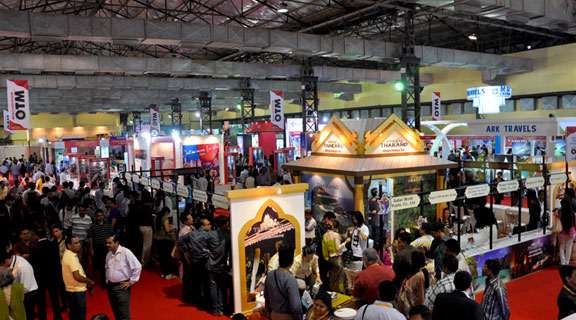Apart from boosting trade, innovation and better understanding between nations, it drives sectoral growth, tourism, hotel reservations, government initiatives, pumps event companies and supplier businesses and a host of ancillary businesses linked directly or indirectly to the exhibitions.
Globally, the size of Exhibitions/Trade Shows industry is 55 billion $ with over 31,000 major trade shows & exhibitions taking place every year, whereas in India it is estimated at Rs 65,000 crore with over 700 major Trade Shows taking place every year at a growth rate of 12% per annum. Exhibitions have a huge impact on the domestic economy and its GDP. Apart from boosting trade, innovation and better understanding between nations, it drives sectoral growth, tourism, hotel reservations, government initiatives, pumps event companies and supplier businesses and a host of ancillary businesses linked directly or indirectly to the exhibitions.
The Indian exhibition market has witnessed a significant change and growth over the last 15 years, a promising future and is destined to grow. The proactive policies of the Indian government and its bureaucracy has allowed for an ecosystem where businesses can be developed more easily. The Indian exhibition industry is among the first to create benefit -making it a pulsating multi-crore industry.
Internationally, exhibitions are respected and treated as an Industry. Germany leads the Exhibition space with almost 60 percent of their national business generated through Exhibitions. In comparison to the international facts and figures, India is still at a nascent stage. The exhibition industry continues to fight issues and challenges like new exhibition infrastructure, public-private partnership projects, venue rates and tax compulsions, complex processes and procedures, temporary imports into India, industry status, professional management, training and development at root level, health and safety initiatives, greener and sustainable initiatives.
The industry status would make the biggest differential, and it’s something the Exhibitions industry perseveres to achieve this fiscal year and beyond. As of now, its Budget hopes & expectations are intrinsically linked to the industry on the whole. Some of these would be:
Increased infra spends: An improved infrastructure has direct implications for the exhibitions industry. Venue creation for exhibition holds the key to future growth, and can take the exhibitions industry growth to double digits. Better infrastructure with a focus on roads, ports, power, IT, aviation and telecom will attract a greater number of professionals from abroad as well as Indian states to trade fairs. An increased allocation will create more job opportunities, besides providing infra boost in the important rural, Tier 2 & 3 towns, with the country requiring close to Rs 3,000 Crore investment on infra per day.
Optimal tax framework to help India Inc.: At upto 30 per cent, the basic rate of Corporate Tax in India remains higher than most parts of the world, added to the fact that the GST still needs some more clarity. It has been a challenging phase for India Inc. and the government does need to create more demand & capacities for private investment in India. If Corporate Income Tax rate reduction seems unlikely, the government should rationalise the effective corporate tax rate by abolishing the Dividend Distribution Tax, which domestic companies are liable to pay when they pay dividend to its shareholders. If DDT is scrapped, it would also encourage companies to announce higher dividends and improve yields for retail investors.
‘No’ to a Populist Budget: There’s been some conjecture that the government intends making the Budget ’18 a populist one. However, people-pleasing is only a knee-jerk reaction, without enduring, positive consequences for the Economy. A difference between being populist and popular needs to be made, and the expectation of the exhibition industry is that the Budget ought to keep the economic consequences in mind before announcing any populist measures, to help maintain a balance between rational and political decisions.
Disclaimer: The views expressed in the article above are those of the authors’ and do not necessarily represent or reflect the views of this publishing house. Unless otherwise noted, the author is writing in his/her personal capacity. They are not intended and should not be thought to represent official ideas, attitudes, or policies of any agency or institution.

